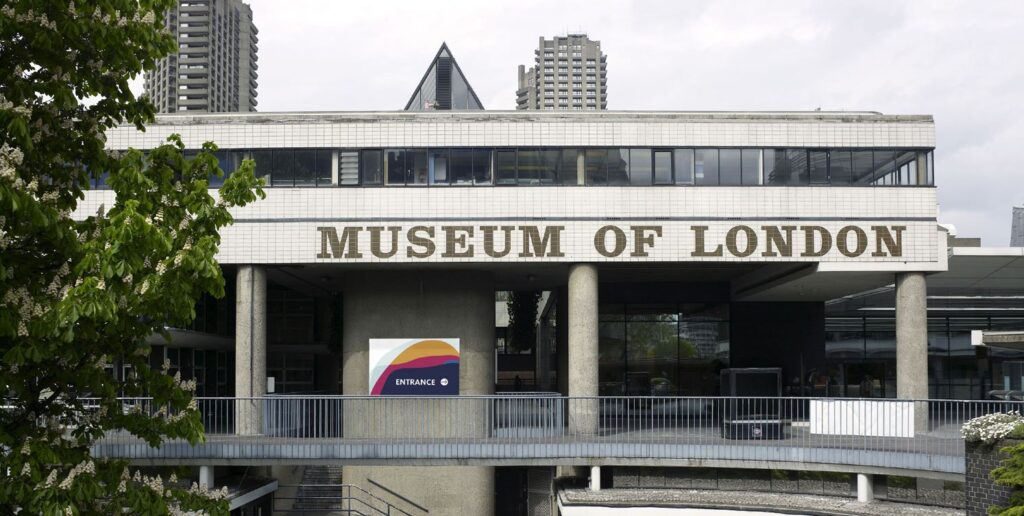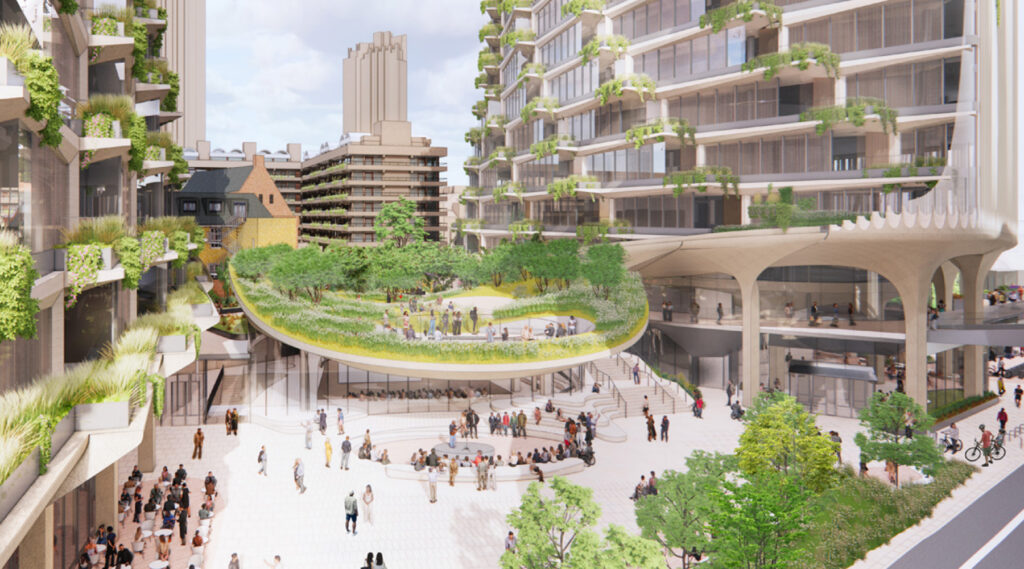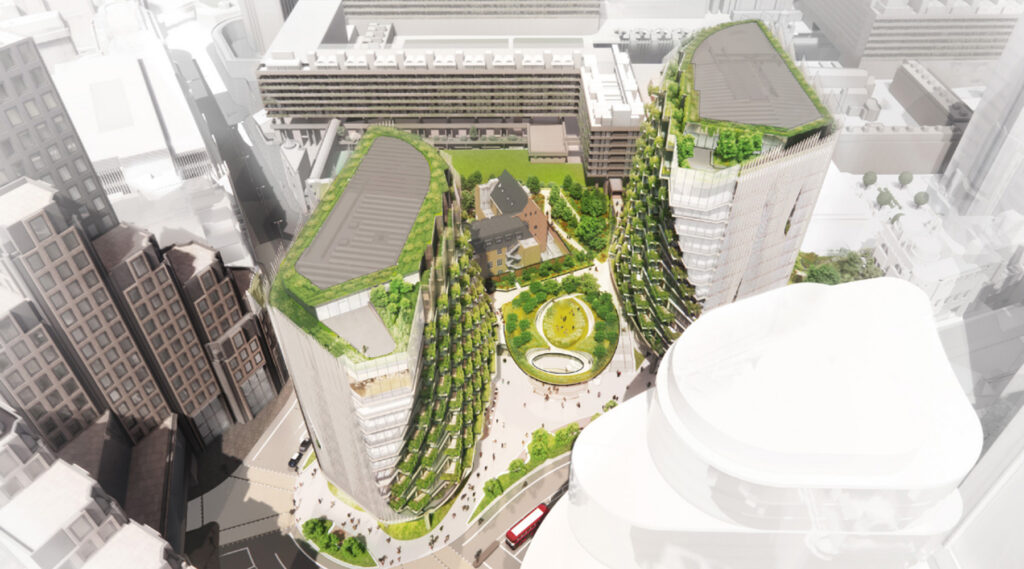The City of London has approved plans to demolish the former Museum of London building and neighbouring Bastion House, but the Communities Secretary Michael Gove has also called the plans in for review.
Michael Gove’s department issued an Article 31 Holding Direction yesterday, which technically prevents the City of London from making a decision until his department has also reviewed the plans. So, the City of London has been able to indicate that it approves the plans, but construction work can’t start until Michael Gove’s department has indicated approval as well.
The current plans are to clear the entire site by demolishing the 1970s Museum of London building and the monolithic Bastion House office block that sits next to it, and then redevelop the site. Essentially, the area around the old museum would be replaced with two office blocks facing each other across a new open space between them.
Public consultation on the London Wall West proposals began in the Spring of 2021 and has resulted in significant changes to the scheme, including a reduction in the massing of New Bastion House, which will open up more space for the public realm. The existing roundabout will also be removed, and the road will be diverted to the south to create a new consolidated peninsular site with two junctions.
There was also a study on how the existing building could be reused, but the developer says they came down in favour of demolishing the Museum of London and Bastion House buildings. However, the plans have been controversial. Nearly 1,000 objections have been filed, over 800 of which come from local campaigners and residents of the neighbouring Barbican estate.
Subject to approval by the Communities Secretary, the City of London says that demolition of the existing site is expected to begin in 2028, with completion scheduled for late 2033.
Chairman of the City of London Corporation Planning and Transport Committee, Shravan Joshi, said: “Today’s resolution to grant permission for the London Wall West proposals brings us closer to our goal of meeting demand for 1.2 million square meters of new office space by 2040, a figure backed by industry experts taking into account projected jobs growth and new working from home patterns.
“The City of London is a global economic powerhouse, and it is vital we continue to signal to investors that we are keeping it that way, by delivering a centre of collaboration and innovation for the hundreds of thousands of people who work here.”
The replacement and renamed London Museum is due to open at Smithfield in early 2026.










I loved the MOL and have visited many many times over the last few decades and I am looking forward to seeing it in its new home. However, as for the old site and its redevelopment I can’t help but feel sad for its total demolition. It was built in keeping with the original Barbican estate and as such there is an architectural coherence with its surroundings. It is such a shame these buildings cannot be sympathetically renovated. I fear by chipping away at the Barbican/London Wall development as they have done over the last 20 odd years it will mean there will be nothing left eventually and we will have lost something special.
“It was built in keeping with the original Barbican estate …” …that’s your problem right there.
The Barbican estate is a rotten design. The MOL kept the same aesthetic, so not surprising it’s rotten too! Away with it!
Agreed
It’s worth bearing in mind that 100 or so years ago, sentiment towards Victorian-era architecture was not dissimilar to the sentiment towards Brutalist architecture we sometimes hear today. “Rotten” and “Away with it” would have been directed towards St Pancras station, for example, in those days.
It’s true that a lot of Brutalist construction was just plain bad. Cheap tower blocks, RAAC, poor fire safety and pure cuboid ugliness with no aesthetic value.
But the Barbican estate is absolutely not of that nature. It’s exceptional in its execution of a coherent vision. The pedestrian deck. The gardens. The pedway network, the twisting stairways. Clear vertical segregation of motor vehicles and pedestrians. The juxtaposition of red and white elements to complement the grey, and of curves and circles (of which the MoL is one) to complement the sharp corners.
Many of these elements are not really fashionable today, but we must recognise that this is a matter of contemporary tastes, not a lack of objective value.
You are not a member of the “Concrete Society” by any chance are you? It is a group that exists to promote and protect building such as this but, in my experience, is made drawn from people who would be seen dead actually living or working in these disfunctional buildings. Time to pull it down and start again. We should never be afraid of acknowledging our mistakes. Also as for the proposed destruction of St Pancras station that wasn’t a century ago it was only about 60 years ago and the main proponents of it were the planners who created building such as the Barbican and who led the demolishion of the Euson Atch giving us the current disfunctional Euston station